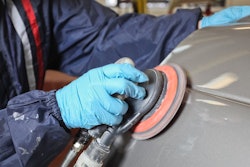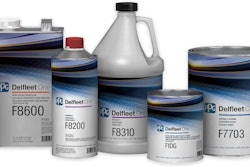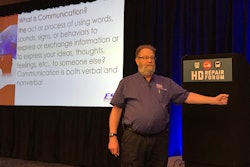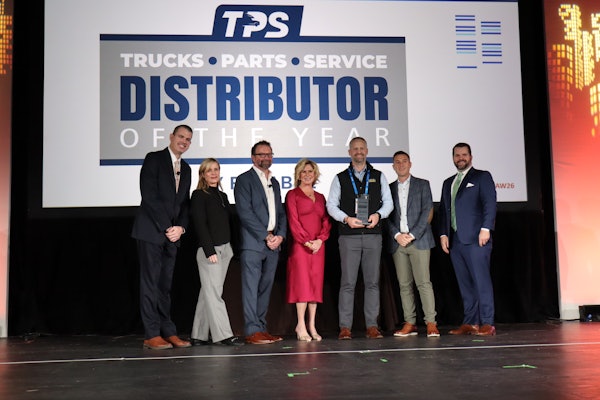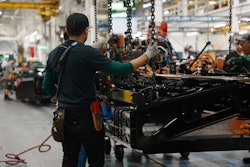 Maylan Newton presents at Tuesday’s HD Repair Forum event in Fort Worth, Texas.
Maylan Newton presents at Tuesday’s HD Repair Forum event in Fort Worth, Texas.Love or hate McDonald’s, Educational Seminars CEO Maylan Newton says there’s one thing the burger giant does well.
It doesn’t matter if you’re in France or Fort Worth, Texas, every McDonald’s cheeseburger is the same.
During an educational presentation Tuesday in Fort Worth at the Heavy Duty Repair Forum, Newton referenced McDonald’s as a prime example of how processes and procedures drive consistency and reliability in business. He says in trucking’s collision service market, just like the food service industry, customers crave consistency.
They want quality work, too, but most importantly, Newton says customers want to know exactly what to expect from an operation every time they show up at a shop.
He says the first step for business owners seeking to build processes in their service operation should be self-reflection. How much of what you already do is part of a daily routine? How about what’s happening in your bays? Newton says a successful service operation is a business that works “when you aren’t in it.”
“A process and procedure setup allows your company to survive you,” he says.
This is something Newton says he learned firsthand when a motorcycle crash forced him to be away from his business for nearly six months. It was then that he confirmed the most valuable processes in his operation existed solely in his mind.
He says building processes in your service business is about taking that information out of your mind and righting it down, clearly and with detailed instructions, so everyone in your operation can use it exactly as you do. That latter aspect is important, Newton says, to ensure buy-in and commitment from team members. He says associates being introduced to new processes like to know why their work is changed and how it will benefit them in the business.
He again references McDonald’s, stating if the fast food giant with the largest teenage workforce in the world can standardize burger production, a service shop should be able to standardize its own workplace procedures.
To make sure processes are well-defined before being written, Newton advised Tuesday’s audience to answer several key questions before beginning the development of any corporate procedure:
- Why am I writing this?
- Who is going to be responsible?
- Where is it used?
- When is it used?
- What is my desired outcome?
But Newton also acknowledges no business can standardize everything. Not even McDonald’s. He says rather than trying to build best practices for every procedure in a shop, business owners and managers should instead focus on the procedures that have the most impact on the business. Once those procedures are complete, additional processes can be devised to complement them. Eventually, he says those efforts pay off.
“Consistency builds value. Value builds trust. And trust means more work,” he says.
How to make estimating more valuable in your business
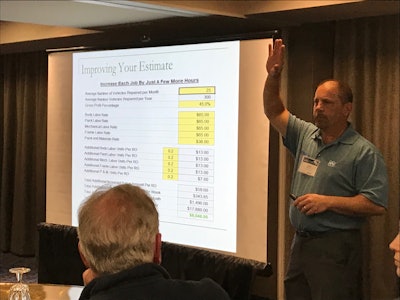 Dean Hancock presents at Tuesday’s HD Repair Forum event in Fort Worth, Texas.
Dean Hancock presents at Tuesday’s HD Repair Forum event in Fort Worth, Texas.In today’s collision repair industry, Dean Hancock, general manager, Gerber Collision & RV, says there are two primary methods for service centers eager to increase gross sales in their service bays: complete more jobs or make more money on existing jobs. Hancock says the former is great when it’s possible, but the latter is significantly easier to change.
Speaking Tuesday to a packed room at the HD Repair Forum, Hancock shared his expertise on how collision centers can improve their estimating procedures to more adequately charge for the work they do and services they provide to boost their bottom line. According to Hancock, improved estimating isn’t about increasing prices or misleading customers, it is about comprehensively itemizing every aspect of a repair.
“All I’m asking is for us to get paid for everything that we’re doing,” he says.
And Hancock says far too many collision centers fail to itemize all aspects of their work. Between services rendered during repairs and painting to pre- and post-service work, parts management and related technician tasks, Hancock says most collision centers are leaving thousands of dollars of gross profit on their shop floor each year.
“Don’t underestimate the power of 0.1 percent [to your business],” he says.
As for what’s actually being missed, Hancock offered Tuesday’s attendees a parade of items they should check to make sure they are probably itemizing in their repair estimates. Those included items such as hazardous waste removal fees, the removal and installation of new or existing components around a paint job, the actual prep work required for painting, patching or repairing used equipment to be included in a job, and secondary products such as DOT tape, caulk and collars and rivets required to complete a repair.
Regarding labor aspects in particular, Hancock says time “should be calculated from when [technicians] pick up their tools to when they are putting them away.”
And he adds it is important to understand most customers will be immediately accepting of these charges if you can justify why they exist. Customers just need to know they are getting what they paid for, he says.

